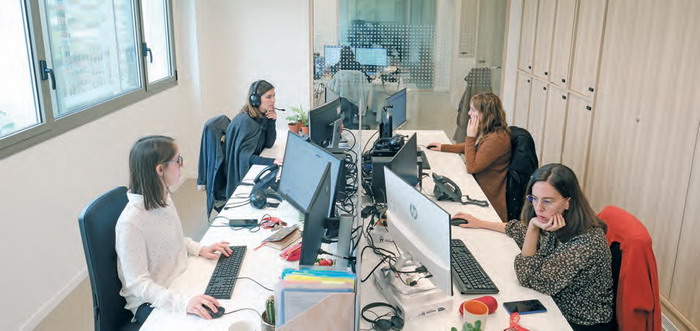Innovation, the unified recipe for the Health sector
The health sector, as a whole, has been given a precise diagnosis: it needs to streamline its digital transformation processes. This assessment does not come out of nowhere. As various organizations have pointed out, the implementation of technological innovations is a key factor to improve the management of medical institutions, extend the scope and efficiency of patient care, strengthen training and research and development tasks, and accelerate response times to health emergencies, among other benefits.
In fact, these types of capabilities, which are included in the concept of “Digital Health”, are increasingly visible. For example, the World Health Organization already has a digital assistant, based on generative artificial intelligence (GAI), that offers assistance in eight languages on health topics. Likewise, in Mexico, in the context of the COVID-19 pandemic, telemedicine, which includes remote medical consultations and services, played a prominent role in serving the public. Through this channel, more than seven million consultations were provided in 2021 in cases related to COVID-19 and other medical specialties.
Increase the dose of innovation
However, for entities in the health sector, the digital transition is not a simple step. They are organizations that already make significant expenses on facilities, equipment and supplies, so they must prioritize resources for medical staff and patient care. Although they offer clear advantages, technological innovations involve investments and decisions that must be weighed against other equally important ones.
 Alejandro Hernandez
Alejandro Hernandez
In that sense, it is worth noting that during the COVID-19 pandemic, especially in 2021, $59.7 billion of funds were injected into digital health initiatives around the world. But investment is currently in the range of $25 billion dollars, a level similar to that recorded six years ago, and it is important to highlight that Latin America only represents 2% of global funding in projects in the sector.
Faced with the dilemma of how to increase its digital skills, without compromising other critical tasks and expenses, the Health sector must consider an alternative that technological innovation itself offers: the cloud.
The great ally
The Health sector is an ideal field to demonstrate one of the great advantages that cloud technology provides: adopting innovative solutions without generating technical complexities within the company, and avoiding additional expenses in technological infrastructure.
One might think, for example, that a medical service that combines Internet of Things (IoT) technology, wearable devices – such as a smart bracelet – and machine learning functions, ideal for remote monitoring, preventive care and emergencies, would seem an enormous effort from a financial perspective. In reality, thanks to the cloud, such a solution is totally feasible and, in fact, there are already multiple use cases and there is even a category associated with this type of implementations: IoMT (internet of medical things).
In general, cloud innovation is considered a valuable ally of the medical sector, which is why it is estimated that the global market for cloud technologies specialized in healthcare will go from a value of $42.9 billion in 2023 to $136 billion. in 2030.
Thus, rather than thinking about the validity of a diagnosis, the health sector must focus on the treatment to follow to adopt cloud technology. The recipe could include four basic components:
- Consider the connectivity factor when adopting a cloud platform. In a cloud environment, all critical data (patient information, medical records and analysis, business documentation, etc.) can be stored, managed and processed. However, for information to flow throughout the organization, be useful and make a positive difference, the cloud solution must be based on a robust, reliable and secure network infrastructure.
- Look for cloud solutions and providers with industry experience, that is, organizations with specialized and proven strategies in safeguarding, managing and moving elements such as digital clinical records, digitized clinical studies and diagnostic documentation.
- Take advantage of the possibility of implementing a UCaaS (unified communications as a service) solution, since the cloud makes it easier to implement by streamlining communication and collaboration between medical specialists, and these solutions enable patient care through phone calls, chats , email, WhatsApp, SMS or social media.
- Prioritize cloud services and platforms that offer specific cybersecurity capabilities for cloud deployments. In terms of data protection, the cloud demands unique knowledge and skills, which must also be applied to the very sensitive information handled in the sector, such as personal patient data, clinical results and research documents, among others.
Thanks to innovation and global digitalization, the health sector is on the verge of a profound transformation, which should deliver countless benefits to society.
Alejandro Hernández Bringas is general director of MCM Telecom. He is a public accountant, with an MBA from the University of Miami, Florida. He has participated in various boards of directors and work committees of organizations linked to his profession, and is an expert in financial management and senior management, specialized as an expert in accounting matters. He has more than 25 years of professional experience, with experience in the development of the Telecommunications industry, Corporate and Social Responsibility, and the promotion of education in new technologies. He was national president of IMEF 2022, and is currently a member of the National Advisory Council of the same institution. He is president and founder of Voz MCM, AC, where he supports vulnerable groups in Mexican society.




Post Comment